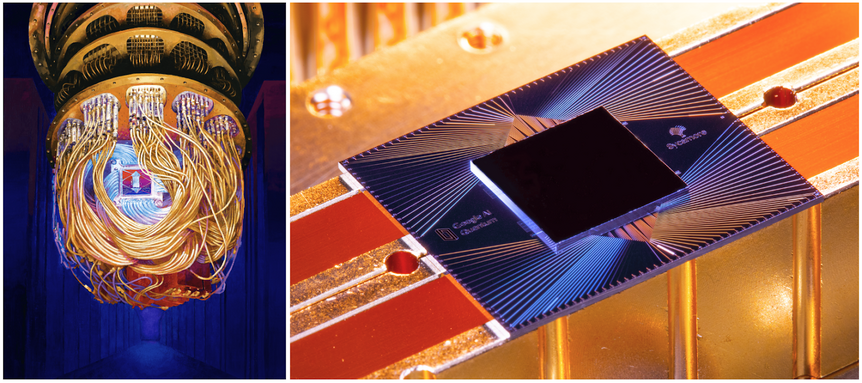Create a free profile to get unlimited access to exclusive videos, sweepstakes, and more!
Google has reportedly achieved 'quantum supremacy' with a new kind of computer processor

Ok, we're like 99.9 percent sure that Google secretly hired Hank Pym to work for them. This morning, the tech company announced via a blog post that it had attained "quantum supremacy" thanks to the advent of a new kind of computer processor capable of making insanely complex computations in just 200 seconds. Based on Google's estimates, it would take the world's fastest supercomputer 10,000 years to achieve the same output.
This new quantum processor — dubbed "Sycamore" — is capable of 54-qubits, a unit of measurement that goes far beyond the competence of conventional computers, which rely on bits or the binary language of 0's and 1's. As SYFY WIRE's own Elizabeth Rayne wrote back in April, "These quantum bits are subatomic particles that can simultaneously exist in a superposition of two different states. The qubit in question can either equal 0 or 1 until someone actually measures it."
Google published its monumental findings in a paper entitled "Quantum supremacy using a programmable superconducting processor." Currently available on nature.com, the report's Abstract posits that, "This dramatic increase in speed compared to all known classical algorithms is an experimental realization of quantum supremacy for this specific computational task, heralding a much-anticipated computing paradigm."
While details of the experiment are all super convoluted, the practical applications are much easier to understand. For instance, Google believes that Sycamore could very well result in lighter batteries for cars and airplanes, better medicines, and more efficient catalysts for producing fertilizer that don't emit crazy amounts of carbon into the atmosphere.
Quantum computers are a concept that date all the way back to the 1980s when they were first proposed by famed theoretical physicist Richard Feynman. Since that time, science has worked hard to make the idea a reality. In April of this year, a computer was programmed to view 16 alternate versions of the future by encoding them onto a photon of light.
As for us, we just want to know the meaning of the universe. If the Hitchhiker's Guide to the Galaxy is any indication, Sycamore might need seven-and-a-half million years of contemplation, so they should start inputting that data ASAP!



























